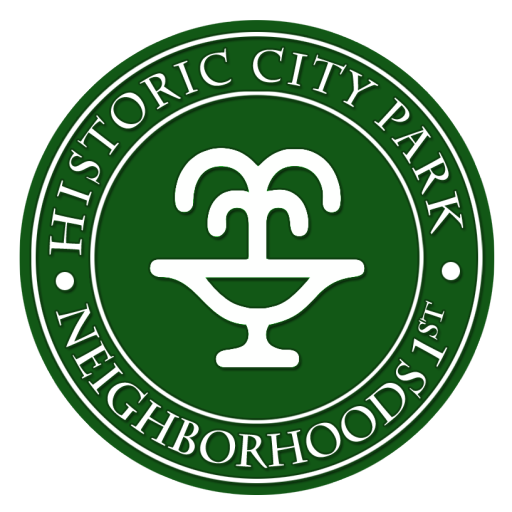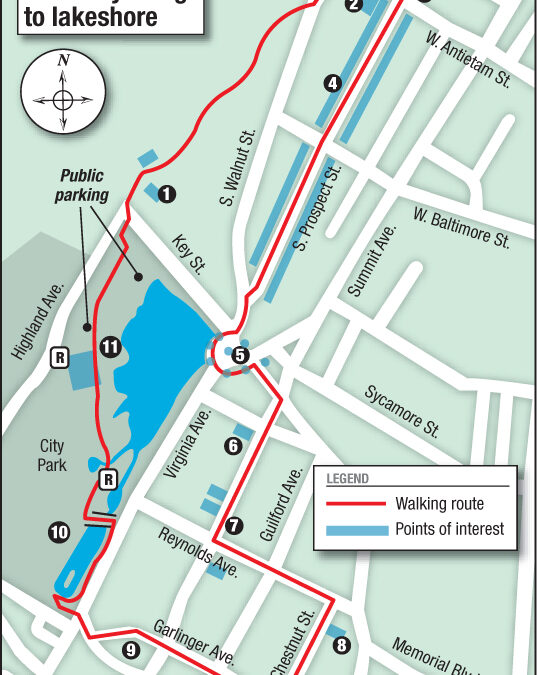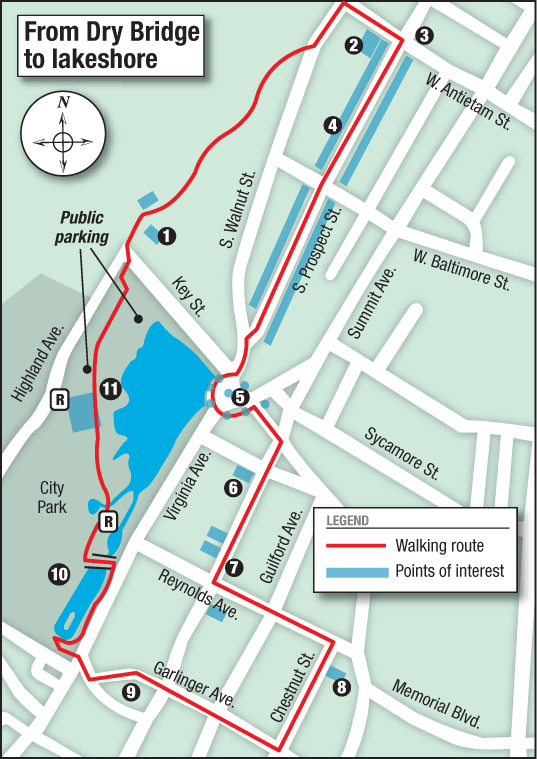- Start by heading over to the Jonathan Hager House Museum. German immigrant Jonathan Hager bought 200 acres of cheap land in Western Maryland and built a story-and-a-half stone house with a basement; he presented it to his new wife, Elizabeth, in 1740. Later, another story was built on top.Hager’s house was purchased in 1944 by the Washington County Historical Society after it fell into disrepair. The refurbished Hager House is now a museum.
- Follow the wide, winding asphalt path past Hager House and through the park. The path crosses a footbridge and meets a sidewalk along South Walnut Street. Bear left to the nearby stoplight at West Antietam Street. Turn right and cross the street. Walk eastward along Antietam and follow the sidewalk uphill, walking alongside St. John’s Episcopal Church. Built in the Gothic Revival style popular in the 1870s, St. John’s steeple is made completely of stone, one of only five stone steeples in the United States,  according to a plaque in front of the church.
- In the early 1800s, South Prospect Street was a one-block street from West Washington Street to the West Antietam Street gully. Just before the the Civil War, two landowners constructed a stone bridge over Antietam Street, extending Prospect southward through a forested hilltop.The bridge became known as the Dry Bridge; the current bridge is iron.
- Now turn right and walk southward along Prospect Street. This is one of the most densely interesting neighborhoods in Hagerstown, architecturally speaking. In two blocks, you’ll see examples of Italianate, Second Empire, Beaux Arts, stick-style and shingle-style Victorian houses.
- Walk downhill to Park Circle. Look down at the sidewalk. Set into the concrete around the traffic circle are a series of millstones, which inspired the traffic circle’s original name, Mill Stone Circle. Tags date the stones to specific mills active in the area from 1790 to 1830. Turn right and cross Walnut Street toward City Park and follow the sidewalk around to see four more millstones.Look at the bronze fountain in the center of the traffic circle. It was installed in 2009 and features a mythological motif, with four women and four bearded satyr heads above them. Hagerstown Garden Club established a garden around the fountain.
Now carefully cross Virginia Avenue toward Park Circle Animal Hospital – there are three more millstones in the sidewalk in front of the hospital – and walk eastward on Memorial Boulevard.
At the next intersection, turn right onto Summit Avenue.
- Cross Surrey Avenue and you’ll see a stucco-clad apartment building. This building was originally built by Hagerstown bicycle manufacturer Robert S. Crawford in about 1903 to produce automobiles. Pipe organ-maker Mathias Moller took over the company in about 1908 and built cars there for about 15 years. The building is still known as Moller Apartments.
- Continue walking uphill on Summit and check out the turn-of-the-century architecture. There’s a terrific, three-story brick house with a square tower at No. 429, and next to it a beautifully restored, colorful Victorian with a lovely garden.Walk up the hill and cross Reynolds to see No. 506, a stellar example of Beaux Arts architecture, which uses classical columns and heavy molding to present an air of aristocracy.
- Our walk is a little more than half done. It’s time for a break. Backtrack a few steps to Reynolds to turn right, heading east. Walk downhill for two blocks to Chestnut Street and turn right. Across the street is Superior Ice Cream and Snack Bar, known locally as Superior Dairy.
- Continue on down Chestnut to the next street, Garlinger Avenue, turn right and walk west toward City Park. In two blocks, you’ll come to Summit Avenue again. Cross Summit, jog to the left about 20 feet and you’ll come to a very narrow street, Dunn Irvin Drive.Dunn Irvin is a wishbone-shaped street with two “legs,” each so narrow it has no sidewalk. Proceed west on Dunn Irvin to Virginia Avenue.
- Across Virginia is the south entrance to City Park, Hagerstown’s answer to New York City’s Central Park. The park was built in the 1920s from unused industrial land and swampland.Cross the street and enter the park by the wide asphalt path. The path comes to Upper Lake and splits; take the right fork and enjoy a pleasant lakeside stroll. In about 100 yards, you’ll come to one of the park’s official entrances. Stairs climb to Virginia Avenue on the right. But turn left and cross the stone bridge to the heart of the park’s features. Here you’ll find a fountain, gardens and a playground for children.
Straight ahead and up the hill is the Mansion House, the 160-year-old home of John Heyser, who once owned the land; Mansion House is now an art gallery.
For this tour, turn right and head north. Just ahead are the park’s public restrooms. Past the restrooms, the path splits. Take the center path and walk about 50 yards to Rock Springs, a picturesque, shady, sunken pool. Walk over the two wooden bridges overlooking the pool, pass another playground and continue along the path to our final stop.
Up ahead, you’ll see an iron fence. Walk through the gate and enter the garden between the park’s Lower Lake and the Washington County Museum of Fine Arts.
- The Washington County Museum of Fine Arts was founded in 1924 by American impressionist painter William Singer Jr. and his Hagerstown-born wife, Anna Brugh Singer. The museum specializes in 19th and 20th-century American art.Admission to the museum is free. There are restrooms for patrons.
And now we’re back to the parking area of the museum. If you have time, consider a walk to path along the Lower Lake or even around the entire lake.
Click here for the original article.



 Hagerstown City Park is known as America's 2nd most beautiful park. The first most beautiful being Central Park in New York City. The park was designed by landscape architect George Burnap who helped design some of the landscapes in Central Park.
Hagerstown City Park is known as America's 2nd most beautiful park. The first most beautiful being Central Park in New York City. The park was designed by landscape architect George Burnap who helped design some of the landscapes in Central Park.